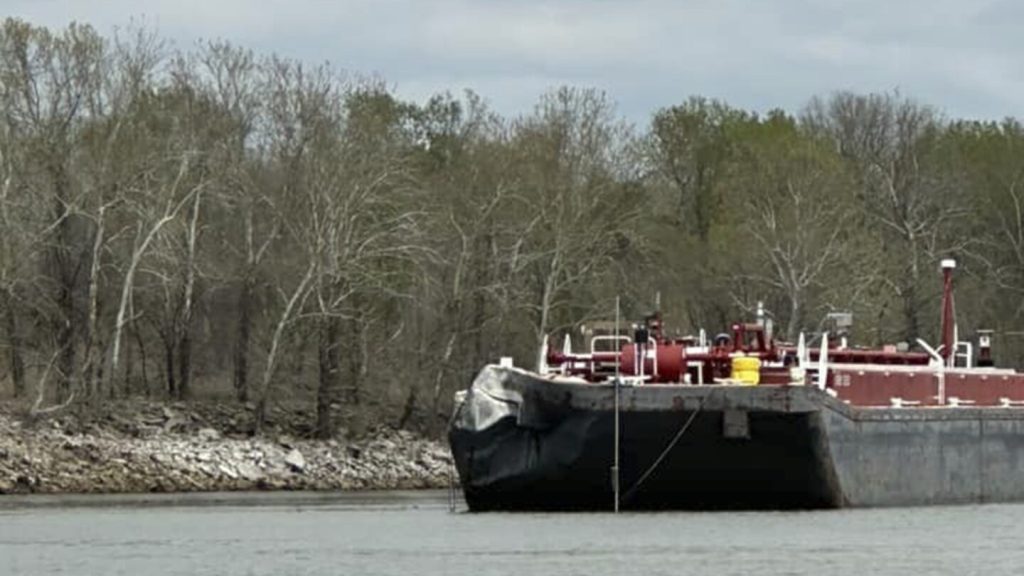The Oklahoma Highway Patrol closed a section of U.S. Highway 59 south of Sallisaw after a barge struck a bridge over the Arkansas River. The closure lasted for a few hours before the highway was reopened to traffic around 4 p.m. Fortunately, no injuries were reported on the highway or the barge. Engineers inspected the structure and deemed it safe to reopen. The bridge crosses the Arkansas River where it enters the Robert S. Kerr Reservoir, near the border with Arkansas. It is unclear what caused the barge to hit the bridge, as officials have not provided any further information on the incident.
Meanwhile, in Maryland, engineers began efforts to lift a section of twisted steel from the collapsed Francis Scott Key Bridge. The bridge crumpled into the Patapsco River after a massive cargo ship crashed into one of its main supports. The incident in Maryland serves as a stark reminder of the potential dangers of maritime transportation and the importance of bridge safety. While no injuries were reported in the Oklahoma incident, the potential for catastrophic accidents remains a concern on waterways and highways across the country.
The closure of the bridge over the Arkansas River caused disruption for motorists traveling on U.S. Highway 59, prompting the Oklahoma Highway Patrol to take quick action to ensure public safety. The reopening of the highway was a relief for drivers, allowing traffic to resume normal flow. The incident serves as a reminder of the importance of infrastructure maintenance and the need for regular inspections to prevent accidents like bridge collapses. The barge strike highlights the potential risks associated with shipping traffic passing under bridges and the need for heightened awareness and safety measures in these areas.
As authorities continue to investigate the cause of the barge striking the bridge, questions remain about the circumstances leading to the incident. It is crucial for officials to determine what went wrong in order to prevent similar accidents in the future. The Oklahoma Department of Transportation’s quick response to the bridge closure and subsequent reopening demonstrates the efficiency of emergency protocols in place to handle such situations. Moving forward, it is essential for ongoing monitoring and inspection of bridges and waterways to ensure the safety of both motorists and maritime traffic.
The news of the barge strike and subsequent bridge closure comes amidst a backdrop of heightened concerns about infrastructure safety and maintenance in the United States. With aging bridges and roads in need of repair or replacement, incidents like these serve as a wake-up call for the necessity of investing in infrastructure upgrades. The incidents in Oklahoma and Maryland underscore the fragility of the nation’s transportation systems and the potential risks posed by failing infrastructure. As authorities work to address the aftermath of these incidents, the focus shifts to implementing measures to prevent future disasters and ensure the safety of all who rely on the nation’s roadways and water routes.
In conclusion, the reopening of U.S. Highway 59 in Oklahoma marked the resolution of a temporary disruption caused by a barge striking a bridge over the Arkansas River. While no injuries were reported, the incident serves as a reminder of the importance of infrastructure safety and the need for ongoing maintenance and inspections. The incident in Maryland further highlights the potential risks associated with maritime transportation and the imperative of ensuring bridge integrity. As authorities investigate the cause of the barge striking the highway bridge, lessons learned from both incidents will inform future safety measures and infrastructure investments to prevent similar accidents and protect public safety.


